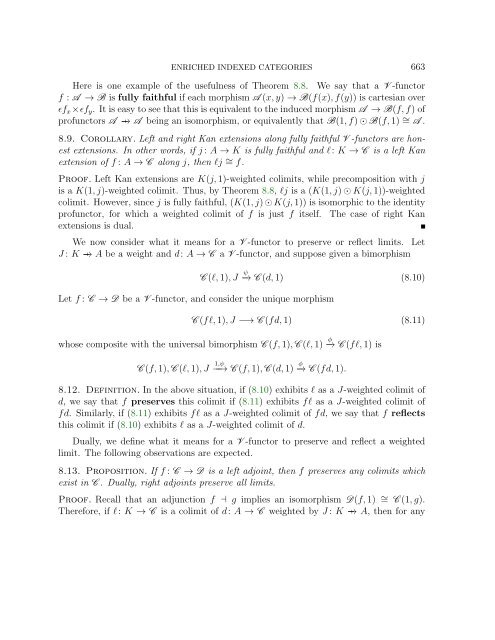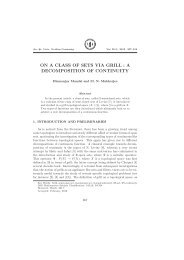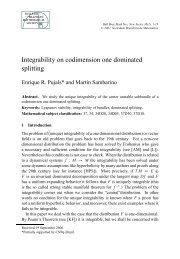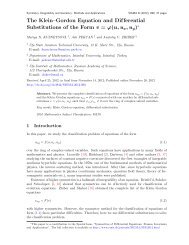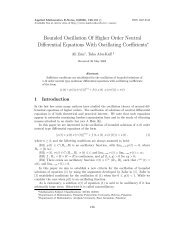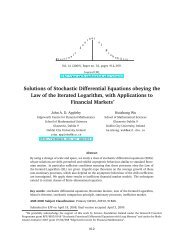ENRICHED INDEXED CATEGORIES Contents 1. Introduction
ENRICHED INDEXED CATEGORIES Contents 1. Introduction
ENRICHED INDEXED CATEGORIES Contents 1. Introduction
You also want an ePaper? Increase the reach of your titles
YUMPU automatically turns print PDFs into web optimized ePapers that Google loves.
<strong>ENRICHED</strong> <strong>INDEXED</strong> <strong>CATEGORIES</strong> 663Here is one example of the usefulness of Theorem 8.8. We say that a V -functorf : A → B is fully faithful if each morphism A (x, y) → B(f(x), f(y)) is cartesian overɛf x ×ɛf y . It is easy to see that this is equivalent to the induced morphism A → B(f, f) ofprofunctors A −↦−→ A being an isomorphism, or equivalently that B(1, f) ⊙ B(f, 1) ∼ = A .8.9. Corollary. Left and right Kan extensions along fully faithful V -functors are honestextensions. In other words, if j : A → K is fully faithful and l: K → C is a left Kanextension of f : A → C along j, then lj ∼ = f.Proof. Left Kan extensions are K(j, 1)-weighted colimits, while precomposition with jis a K(1, j)-weighted colimit. Thus, by Theorem 8.8, lj is a (K(1, j) ⊙ K(j, 1))-weightedcolimit. However, since j is fully faithful, (K(1, j) ⊙ K(j, 1)) is isomorphic to the identityprofunctor, for which a weighted colimit of f is just f itself. The case of right Kanextensions is dual.We now consider what it means for a V -functor to preserve or reflect limits. LetJ : K −→ −↦ A be a weight and d: A → C a V -functor, and suppose given a bimorphismC (l, 1), J ψ −→ C (d, 1) (8.10)Let f : C → D be a V -functor, and consider the unique morphismC (fl, 1), J −→ C (fd, 1) (8.11)whose composite with the universal bimorphism C (f, 1), C (l, 1) φ −→ C (fl, 1) isC (f, 1), C (l, 1), J 1,ψ−→ C (f, 1), C (d, 1) φ −→ C (fd, 1).8.12. Definition. In the above situation, if (8.10) exhibits l as a J-weighted colimit ofd, we say that f preserves this colimit if (8.11) exhibits fl as a J-weighted colimit offd. Similarly, if (8.11) exhibits fl as a J-weighted colimit of fd, we say that f reflectsthis colimit if (8.10) exhibits l as a J-weighted colimit of d.Dually, we define what it means for a V -functor to preserve and reflect a weightedlimit. The following observations are expected.8.13. Proposition. If f : C → D is a left adjoint, then f preserves any colimits whichexist in C . Dually, right adjoints preserve all limits.Proof. Recall that an adjunction f ⊣ g implies an isomorphism D(f, 1) ∼ = C (1, g).Therefore, if l: K → C is a colimit of d: A → C weighted by J : K −→ −↦ A, then for any


